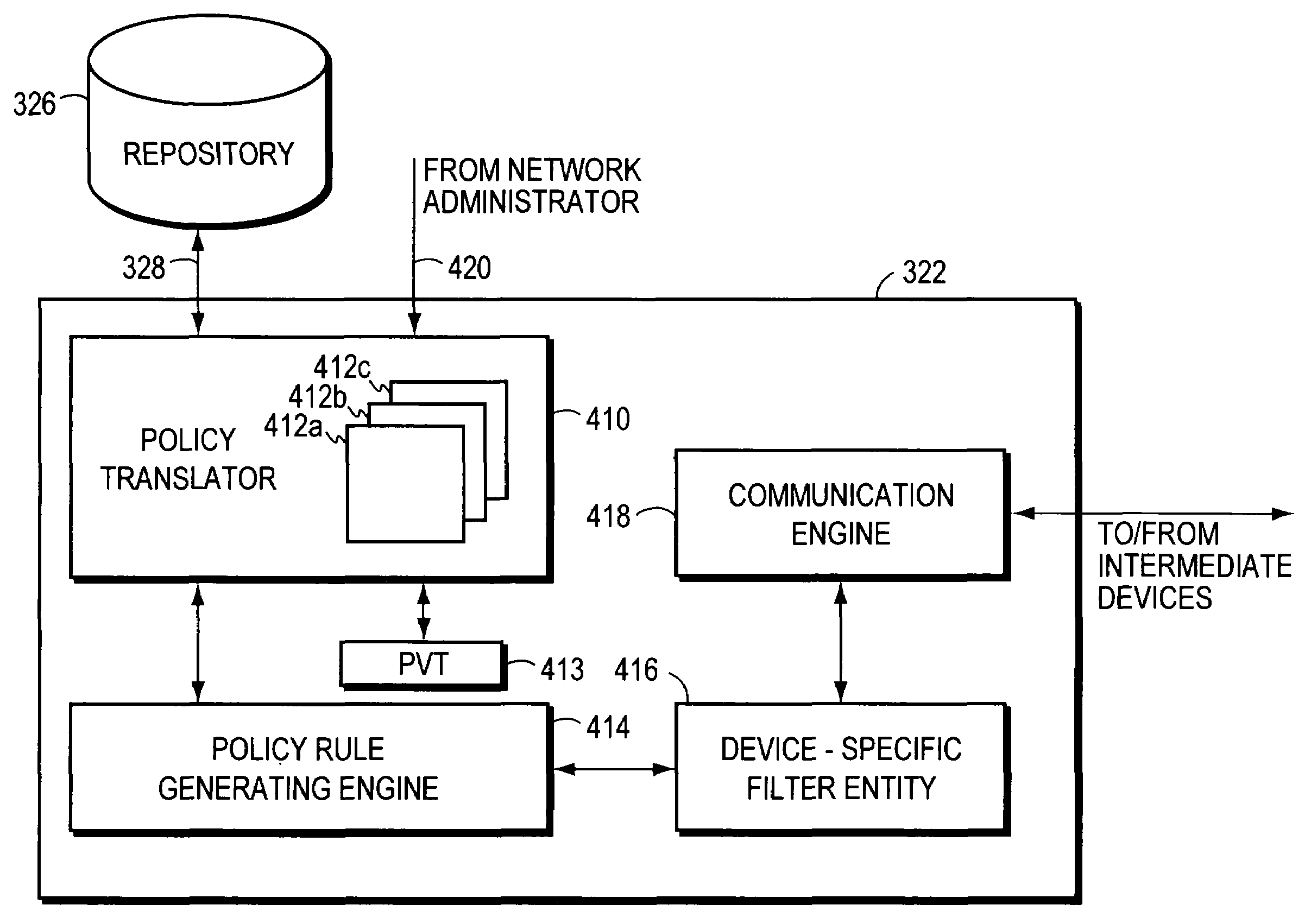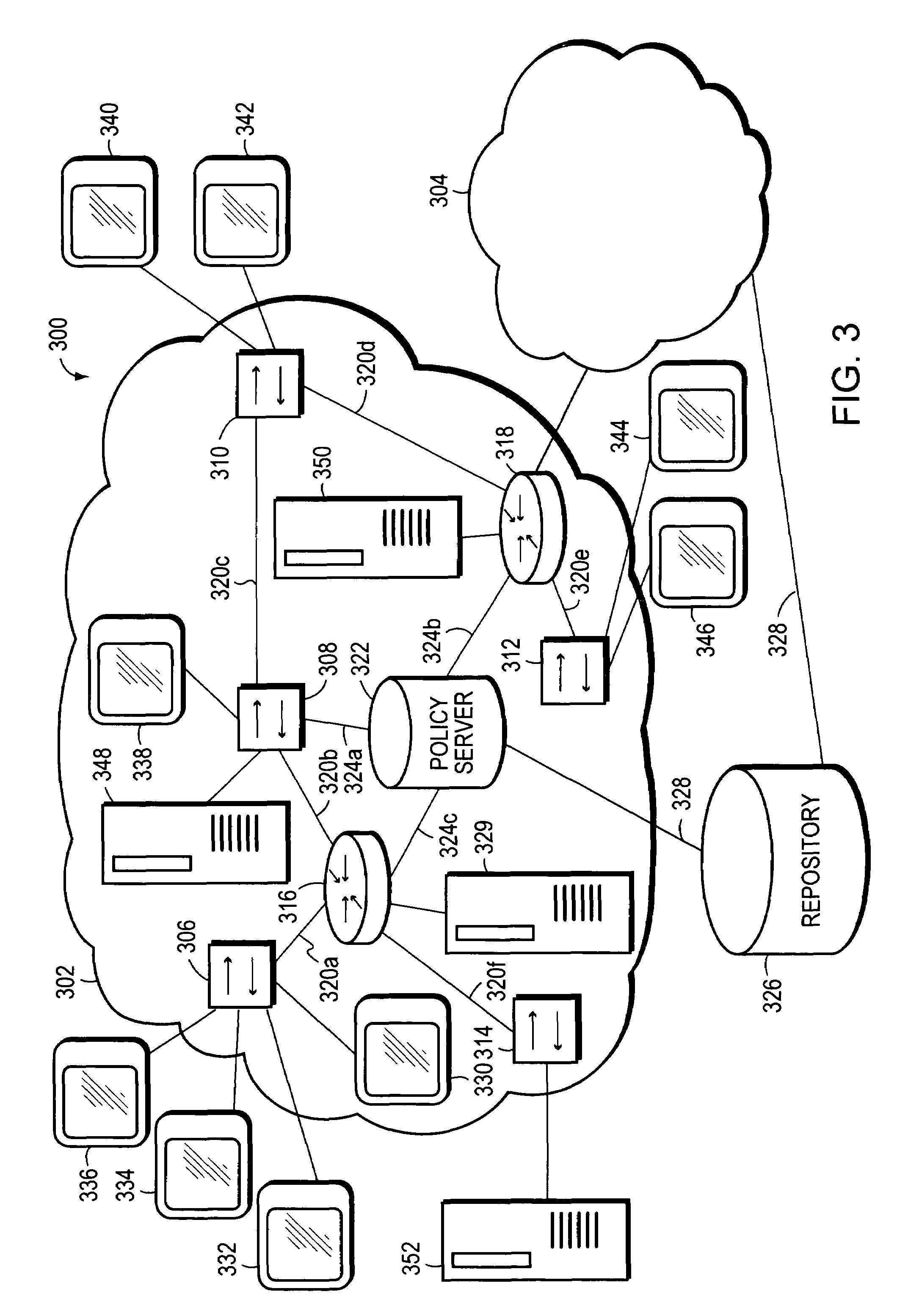Method and apparatus for defining and implementing high-level quality of service policies in computer networks
a technology of computer networks and quality assurance, applied in the field of computer networks, can solve problems such as congestion, network devices are unable to keep up with an increase in traffic, and the network performance is affected
- Summary
- Abstract
- Description
- Claims
- Application Information
AI Technical Summary
Benefits of technology
Problems solved by technology
Method used
Image
Examples
Embodiment Construction
[0041]FIG. 3 is a highly schematic block diagram of a computer network 300. The network 300 may be segregated into one or more network domains by a network administrator, such as network domains 302 and 304, as described below. The network 300 includes a plurality of entities, such as end stations and servers, interconnected by a plurality of intermediate devices, such as bridges, switches and routers. In particular, network 300 includes a plurality of switches 306–314 and routers 316–318 interconnected by a number of links 320a to 320f, which may be high-speed point-to-point or shared links. Each domain 302 and 304, moreover, includes at least one policy server 322 that is preferably connected to one or more intermediate devices, such as switch 308 and routers 316–318, by links 324a–324c. The network 300 also includes one or more repositories, such as repository 326, that is preferably connected to each policy server 322 by a link 328. The repository 326 may be an organization-base...
PUM
 Login to View More
Login to View More Abstract
Description
Claims
Application Information
 Login to View More
Login to View More - R&D
- Intellectual Property
- Life Sciences
- Materials
- Tech Scout
- Unparalleled Data Quality
- Higher Quality Content
- 60% Fewer Hallucinations
Browse by: Latest US Patents, China's latest patents, Technical Efficacy Thesaurus, Application Domain, Technology Topic, Popular Technical Reports.
© 2025 PatSnap. All rights reserved.Legal|Privacy policy|Modern Slavery Act Transparency Statement|Sitemap|About US| Contact US: help@patsnap.com



